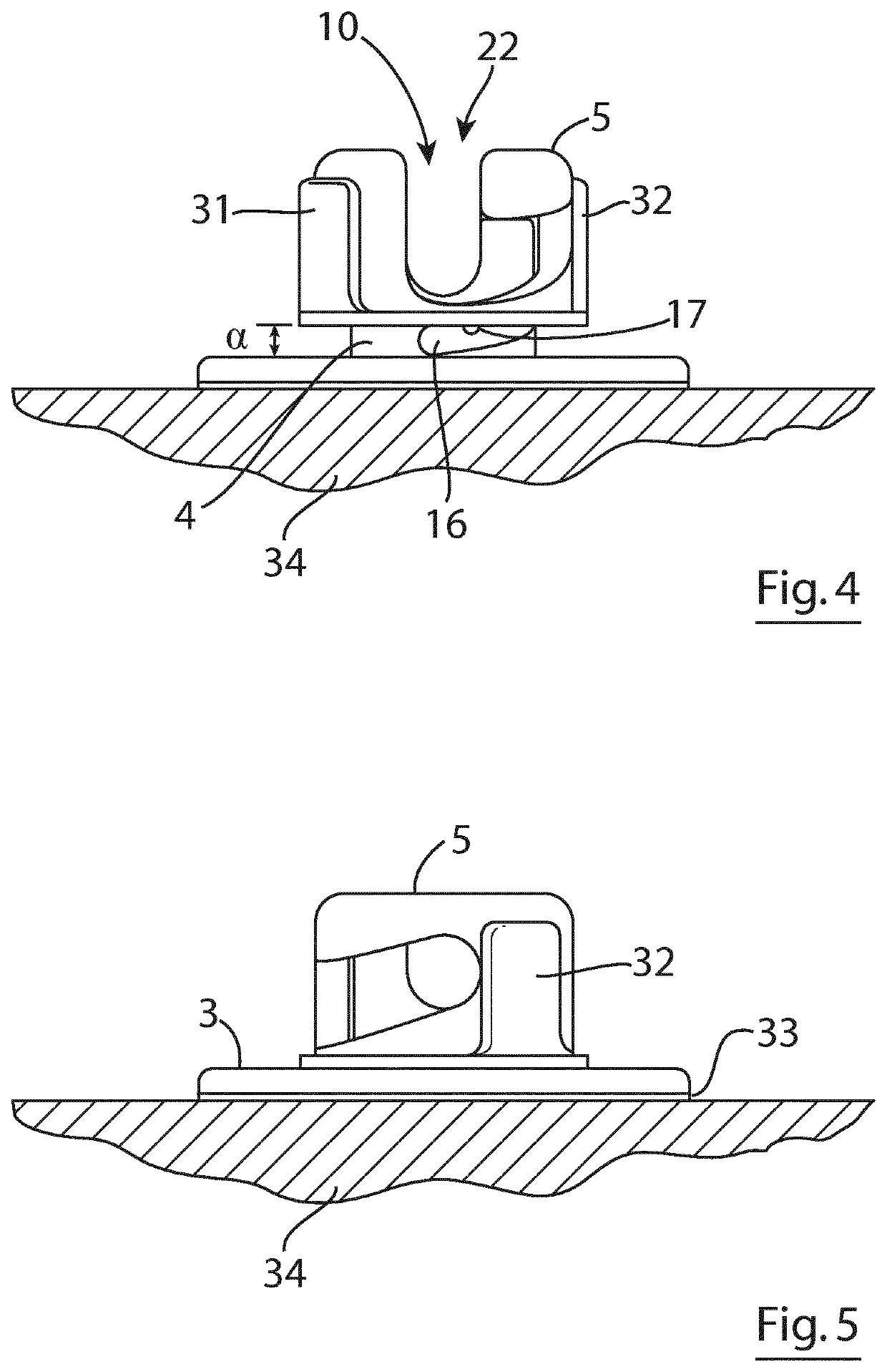Securement device for pipes, cables or catheters
a technology for secure attachment and catheters, which is applied in the direction of catheters, electrical devices, belts/chains/gearrings, etc., can solve the problems of thrombosis, occlusion, and difficulty in securely attaching medical articles to surfaces, so as to reduce the risk of related complications, prevent movement and/or dislocation, and minimize the risk of infection
- Summary
- Abstract
- Description
- Claims
- Application Information
AI Technical Summary
Benefits of technology
Problems solved by technology
Method used
Image
Examples
first embodiment
[0049]As shown in FIGS. 1 to 9 of the accompanying drawings, a securement device 1 in accordance with the invention for securely attaching a medical article such as a catheter 2 to a patient is generally made up of an anchor pad 3 for placing the securement device 1 on the patient, a base in the form of a substantially cylindrical base 4 on the anchor pad 3 and a screw cap 5 rotatably mountable on the base 4 at a (screw) mounting 6 defined between the base 4 and the screw cap 5 between a catheter receiving position (shown in FIGS. 2, 4 and 6) and a catheter gripping position (shown in FIGS. 3, 5, 8 and 9) in which radial pressure is applied to the catheter 2 placed in the securement device 1 to securely hold the catheter 2 and prevent micro-pistoning of the catheter 2. The screw cap 5 can be moved repeatedly between the catheter receiving and catheter gripping positions so that the catheter 2 can be positioned, secured, repositioned and re-secured as needed without requiring the use...
second embodiment
[0061]FIGS. 9 and 10 show a securement device 1 of the invention in which the securement device 1 has a secondary fixing clasp 35 on the anchor pad 3 for clasping and tidying a catheter 2 (not shown) in place on the securement device 1. The cylindrical base 4 and the screw cap 5 are as previously described in relation to the securement device 1 of FIGS. 1 to 9 and like numerals indicate like parts.
[0062]In the present embodiment, the anchor pad 3 is shaped and contoured to define a primary anchor pad portion 36 on which the cylindrical base 4 of the securement device 1 is mounted and a secondary anchor pad portion 37, on which the secondary fixing clasp 35 is mounted, spaced apart from the primary anchor pad portion 36. The primary anchor pad portion 36 is connected with the secondary anchor pad portion 37 by a wave-shaped anchor pad web portion 38 which extends between the primary anchor pad portion 36 and the secondary anchor pad portion 37 and spaces the fixing clasp 35 a set dis...
PUM
 Login to View More
Login to View More Abstract
Description
Claims
Application Information
 Login to View More
Login to View More - R&D
- Intellectual Property
- Life Sciences
- Materials
- Tech Scout
- Unparalleled Data Quality
- Higher Quality Content
- 60% Fewer Hallucinations
Browse by: Latest US Patents, China's latest patents, Technical Efficacy Thesaurus, Application Domain, Technology Topic, Popular Technical Reports.
© 2025 PatSnap. All rights reserved.Legal|Privacy policy|Modern Slavery Act Transparency Statement|Sitemap|About US| Contact US: help@patsnap.com



